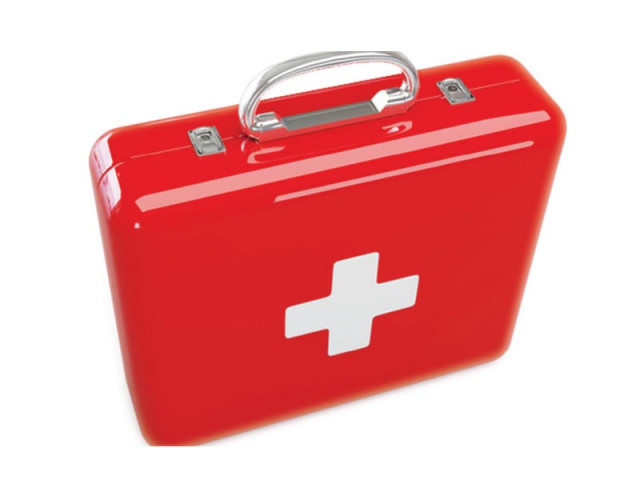Off target: Reforms committee expresses concern on MDGs
Report submitted by subcommittees paints gloomy picture of child mortality.

The report was submitted to the provincial government by the subcommittee formed to find ways to improve the health sector. PHOTO: FILE
Khyber-Pakhtunkhwa (K-P) cannot reach the Millennium Development Goals (MDG) in health sector as diarrhoea and pneumonia continue to cause child fatalities – an issue which comes under MDG4, ‘Reduce Child Mortality’, revealed a report submitted by the subcommittee on primary health care (PHC) on Thursday.
The report was submitted to the provincial government by the subcommittee formed to find ways to improve the health sector. According to it, institutional delivery is less than 20% across the province. Moreover, lady health workers (LHW) only cover 58% of the province.

Two other subcommittees also submitted reports – institutional buildings and health workforce. Committees comprised officials (current and former) from the health secretariat and Shaukat Khanum Cancer Hospital CEO Dr Faisal Sultan. One group was headed by provincial health minister Shaukat Yousafzai.
All three reports will be reviewed by experts to implement their recommendations built on the findings.
Maternal matters
Minimal reduction was seen in maternal mortality rates, which remain high. It also points out a dearth of skilled birth attendants in local communities which lead to ad hoc methods used to facilitate labour and delivery.
Infant and child health
The document continues to paint a gloomy picture as it reports only 50% of the population is covered by the two-step measles immunisation programme.
The immunisation has a high dropout rate, which means some children do not come back for their booster shots. Infant mortality in the province stands at 55/1,000 live births. Incomplete measles coverage is a barrier in infant mortality rate reduction.
Touching on malnutrition, the primary health care report explains children below the age of 15 suffer from its effects. Malnutrition in the population reflects the MDG1 ‘Eradicating Extreme Poverty and Hunger’ and will also not be fulfilled in K-P. “48% are stunted (low height for age) and 17% are wasting (low weight for age). Only 38% of infants are being reared on breast milk exclusively,” reveals the report.
The report talks of several gaps in the sector such as the lack of institutional support for nutrition and a dearth of female Expanded Program on Immunisation (EPI) workers. This leaves inadequate coverage for pregnant women and newborns.
“The system of referrals is not functional between community, primary and secondary levels of health care. There is a lack of community involvement and empowerment in promoting service utilisation, accountability and decision making in all tiers of the health sector,” reads the report.
General recommendations
The subcommittee includes a wide range of recommendations: homebirths assisted by skilled birth attendants, ambulance services at rural health centres (RHC) and strengthening city dispensaries. It also proposes focusing on adolescent health, as well as maternal nutrition to address low birth weight and premature births.
Accessible immunisation
As for nutrition and immunisation coverage, the report recommends “there should be one LHW inside RHCs and a one male health worker for outreach in each facility.”
“LHWs need to be involved in the EPI administration, especially the tetanus toxoid (TT) vaccination. The EPI needs to extend to private hospitals for surveillance and vaccinations,” it advises.
The review recommends universalisation in the nutrition sector – one policy for all regardless of rural/urban divide and socio-economic sectors. There is a need for stabilisation centres for acutely malnourished children with additional health complications at district headquarters hospitals in order to whittle down nutrition-related mortality.
Innovating outreach
“There is a need to use mobile technology for health education, social mobilisation and real-time reporting, piloting mHealth (public health services using mobile communication devices) at the PHC level,” states the dossier. The report adds communities should have ambulances to provide better health connectivity to in-between areas.
“We have forwarded these reports to the provincial government so practical steps can be taken towards implementation. They will be reviewed and necessary action will be taken to bring improvement in the light of these recommendations” claimed an official of the health secretariat.
Published in The Express Tribune, July 26th, 2013.













COMMENTS
Comments are moderated and generally will be posted if they are on-topic and not abusive.
For more information, please see our Comments FAQ